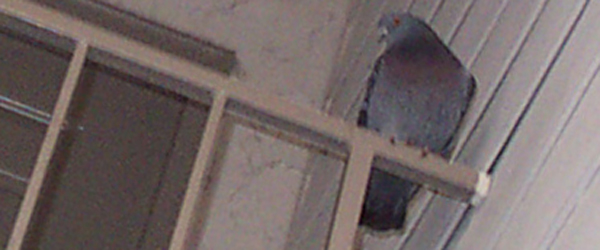- info@wildlife-removal.com
Call us for help in your town
Wildlife Removal Education
About Pigeons
Need pigeon removal in your hometown? We service over 500 USA locations! Click here to hire us in your town and check prices - updated for year 2020.
There are over 300 species of pigeons known to man, and these include the white-headed pigeons, bared-eyed pigeons, wood pigeon, turtle dove, hill pigeon, Japanese wood pigeon, snow pigeon, metallic pigeon, squatter pigeons, ruddy pigeons, African green pigeon etc. Pigeons and doves are closely related birds, being the only two members of the family – Columbidae.

Appearance
The pigeon’s distinctive features include a small head, slender bill, short legs, strong and muscular wings, and a large and compact body. Pigeons come in varying length, weight and colours, and this is largely dependent on the different species that exist. Their colours range from grey to white, tan and black. A pigeon of diamond dove specie can have a length of 15 cm and weigh just 30g, while Victoria crowned pigeons (largest specie of pigeon) can weigh as much as 2.4 kg and be as long as 80 cm. Nevertheless, the average weight and length of pigeons are 370g and 28 cm respectively.
Behaviour
Pigeons possess a highly sensitive hearing as well as good eyesight, which makes them capable of seeing things at far distances better than human beings. They can also detect sounds at far lower frequencies than humans are able to, and can even hear the approach of distant storms and volcanoes.
Pigeons are monogamous in nature, so they are usually paired. Being highly social birds, a flock of pigeons can have between 20 and 30 pigeons that practically live and feed together, but for every male in the flock, there is a female.
They are great flying birds because of their strong and muscled wings, and are capable of going on long distance journeys at a speed of about 50 to 70 miles per hour.
Pigeons are known to enjoy a good relationship with man and as result, some species have been domesticated. Their good rapport with man is mostly due to their remarkable intelligence and beauty. In years past, they have been used as a means of communication due to their ability to trace their way back home from wherever they are sent. So much so that they are credited to have made some vital contributions during world wars I and II.
Diet
Adult pigeons are basically seed and fruit eaters. With their large and strong gizzard, they are able to grind these fruits and seeds and then digest them. On few occasions, pigeons also feed on insects, garbage, and other available food materials. On the other hand, squabs (young pigeons) do not have fully developed gizzard, therefore they feed on pigeon milk, which is a nutritious substance secreted in the linings of the crops of the adults (both male and female). The squabs dig their heads into the adults’ feathers to get to the pigeon milk. Unlike other birds that swallow water, pigeons drink water by sucking it and each pigeon can take up to 30 ml of water per day. Read the guide What Do Pigeons Eat?
Life Cycle
Few days after mating, the female pigeon lays two glossy white eggs and the eggs get incubated for 14 to 18 days. Both male and female pigeons share the responsibility of incubating the eggs, with the male doing the honours during the day while the female takes over at night.
After birth, the young pigeons (squabs) depend on their parents for the first two months of their lives for feeding and shelter, after which they leave their parent's nests and start living on their own, sometimes within the same flock. Being monogamous, a couple of pigeons can produce young ones for about eight times in a single year.
Remarkably, the average life span of wild pigeons is greater than that of those living in urban areas. The average lifespan of wild pigeons is 15 years, while those in urban areas have an average lifespan of about 4 years.
Habitat
Pigeons can be found almost anywhere in the world, except places with extreme conditions like the Sahara desert, the Antarctica and Arctic. They can be arboreal, terrestrial, and semi terrestrial; and they are adapted to living in different habitats ranging from woodlands to mangrove, desert, rainforest, grassland and savannah.
Many species of pigeons are dependent on human beings and as such can be found living around men. They build their nests, which are made of small sticks and other debris, in different places like rocks, house roof, trees, city buildings, bridges, feed mills, houses, farm yards etc. Read more about Are Pigeons Good Pets?
Read the guide Noises Pigeons Make When They Are Living In Your House or go back to the Bird Removal page.


















